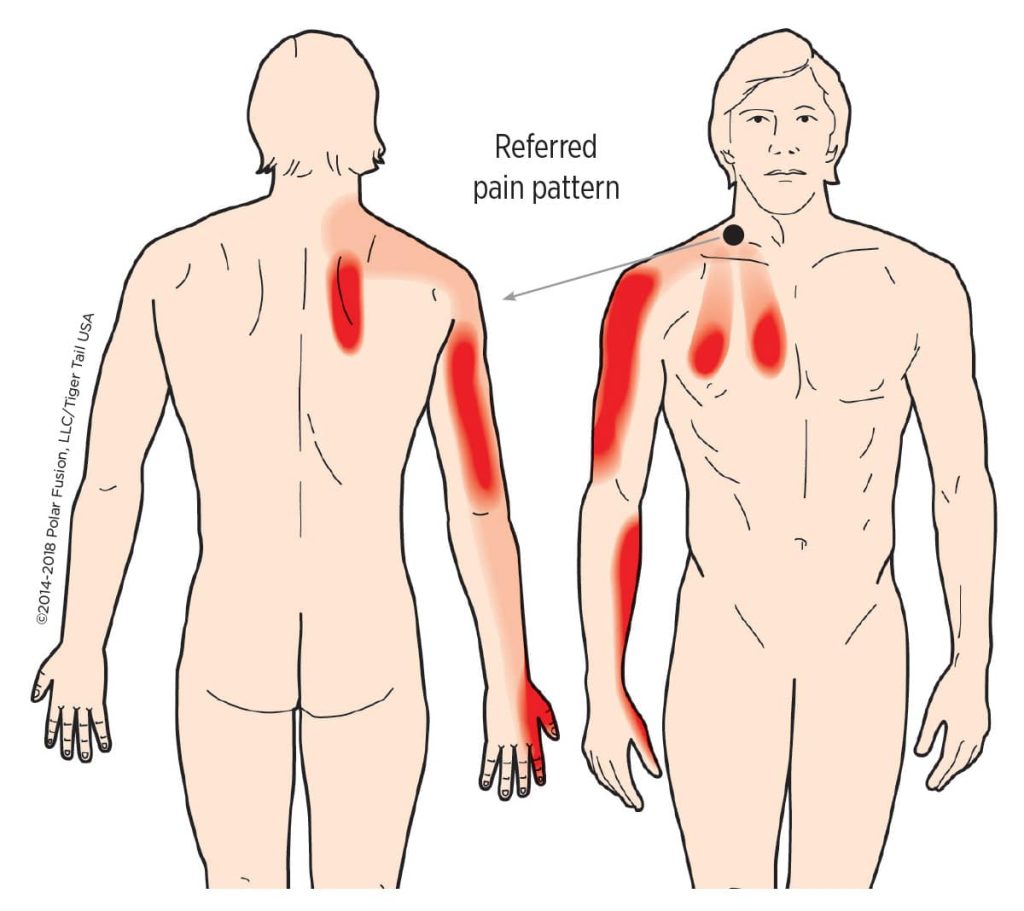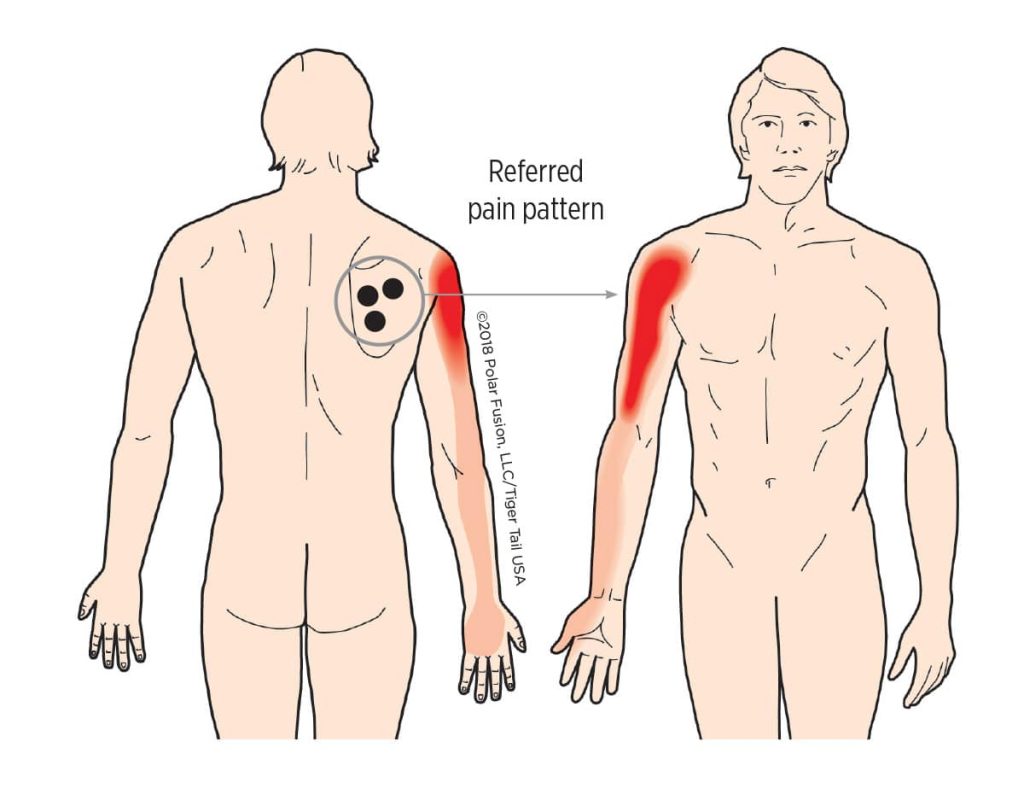
Free Shipping on $50+
Shoulder pain is caused by a number of different muscles, primarily those that attach directly to the shoulder blade. Muscle knots in the shoulder blade can refer pain locally to the top, around, and the front of the shoulder blade, while other muscle knots can refer pain to the shoulder as well as other parts of the body.
Common shoulder muscle knots, which consist of tight and contracted muscles, are indicated below by a black dot. The red area in the illustrations indicates “referred pain” – meaning, the pain you feel is often not in the location of your trigger point until you press on it. As an example, you may feel pain in the shoulder, but the trigger point may actually be in the neck.
The Scaleni is a group of three, complex muscles located on the side of the neck. It is often the trigger point or the source of the muscle knot responsible for generating referred pain elsewhere.

Muscle knots in the Scalene muscles of the neck can cause pain in the upper arm.
A common source of shoulder pain is the rotator cuff, whose purpose is to stabilize the shoulder joint. There are four muscles in the rotator cuff muscle group. The muscles lift the arm out to the side of the body (Supraspinatus), move the arm away from the body (Infraspinatus and Teres Minor), and move the arm forward to the body (subscapularis). Knots in these shoulder muscles can refer pain to the front of the shoulder, down the arm, into the hand, and back of the shoulder, and produce pain around the wrist.

The Infraspinatus, one of four muscles controlling the rotator cuff, can create referred pain affecting the entire arm.

Dr. Julie Zuleger has over 20 years of experience as a Licensed Massage Therapist, Certified Strength, and Conditioning Specialist (CSCS), Corrective Exercise Specialist, RYT-500 Yoga Instructor, and Human Movement Specialist. Julie promotes self-care using massage tools and stretching-based programs and teaches continuing education courses for yoga teachers, massage therapists, athletic trainers, strength and conditioning, fitness, and wellness professionals. Julie holds a PhD in Education and is the Director of Kinesiology and Education at Tiger Tail USA.